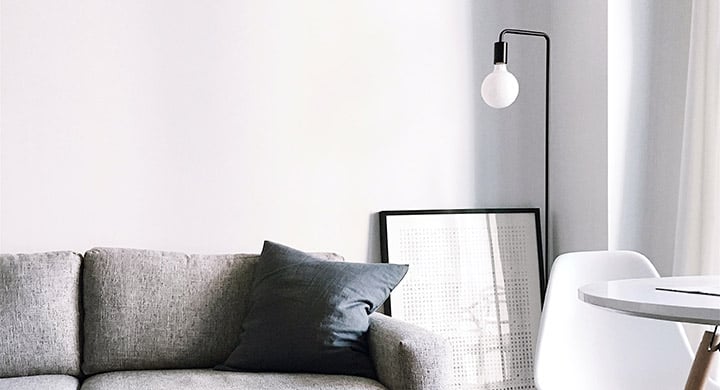How to modernize any apartment rental
You might not own your rental, but you can “own” it. Easy apartment decorating ideas.
Renting an apartment is rife with paradox. It can feel like pure freedom and suffocating confinement simultaneously. It’s your space, but it’s not your space. You’re on your own, except for your roommates. It’s the best, perhaps the simplest time of your life, but your struggles are very real, too.
We get it. But think about this: 32% of Americans are rental tenants, just like you. With that many people all using their imagination and creativity to make their apartments into their homes, posting living room ideas, apartment bedroom ideas, studio apartment design ideas and pretty much every small-space hack imaginable, there is literally no rental question without an answer — no rental challenge without a brilliant blog post exploding with solves.
For our part, our business is renters insurance. Which means our business is renters. Which means it’s our business to make renters' business our business. Which means we’ve got some helpful hints to make your home happier, and we’re sharing them here. Enjoy.
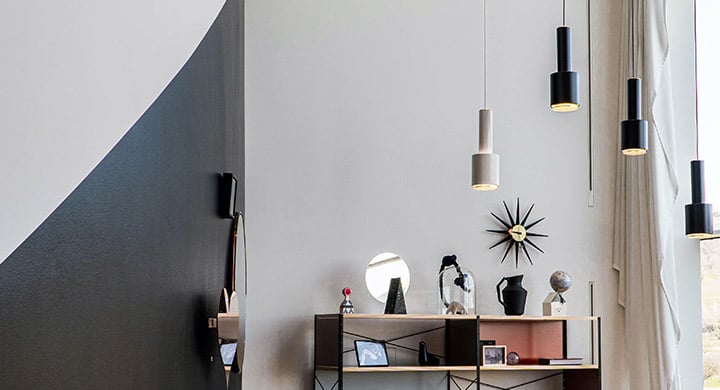 Photo by Rubi Bill on Unsplash
Photo by Rubi Bill on Unsplash
Lighting design.
Bad lighting makes everything bad. It makes you feel bad; it can make you look bad; it can drain you of energy and exacerbate depression. Conversely, one good light fixture can not only make up for a whole lot of shortcomings where a space is concerned, but it can also change your life for the better.
When considering lighting your space, start where the sun don’t shine. Literally. Find fixtures that illuminate dark corners of rooms. Doing so will open up more of the room to the eye and make everything look bigger than it is. You might need some tools to help you do this, and we have some ideas there.
String lighting: It’s not just for the holidays anymore. These days, designers understand the charm of string lighting to fill spaces with extra points of illumination, and they’ve created string lighting to suit outdoor areas, modern, minimal tastes and more whimsical tastes as well.
Use mirrors to your advantage. Mirrors placed behind artificial light sources will help amplify them. Or place a mirror across from a window to spread natural light and bring some of the outdoors inside.
Light-colored lamp shades also help diffuse harsh light sources and fill spaces with a warm glow that will brighten your mood. If you aren’t bored with this topic, please let us suggest more information on lighting.
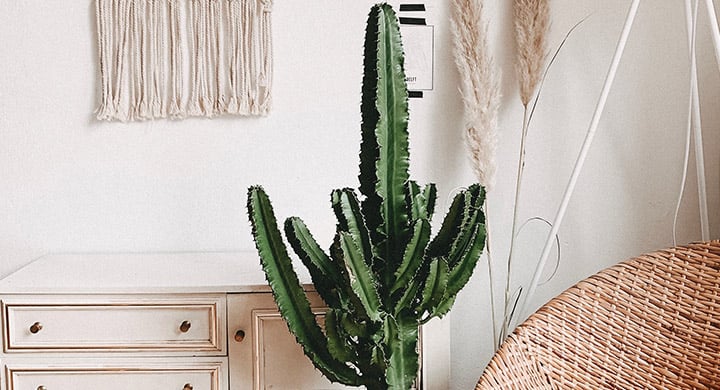 Photo by Alyssa Strohmann on Unsplash
Photo by Alyssa Strohmann on Unsplash
Smell design.
Your apartment is your sanctuary. It’s where you relax, unwind and entertain friends (and “friends”) — it’s where you sleep. And few senses are more intimately personal than smell.
Smell probably isn’t what you’re thinking of when you’re googling “how to decorate a one-bedroom apartment,” but it’s something you can control without banging a nail or adding any paint. Unless it smells like decaying garbage, old sneakers or anything else that might offend the neighbors, you can use scent to add personal ambiance without much fear of landlord reprisal.
We’ve all been to a hotel or a retail space where the scent’s been well considered. It’s an amazing touch. When it’s your own space, consider the mood you want to evoke when you first walk in the door. Want it to feel fresh and clean? Go with something citrusy. Warm and cozy? Think vanilla or wood. Relaxed and calm like your favorite spa? Lavender and white tea say “namaste” in a big way.
One thing to keep in mind: No matter how much you love the smell, you will stop smelling it before long. It’s called sensory fatigue, and it happens to everyone. But just because you don’t smell it doesn’t mean the smell is gone or that it’s even diminished. Be sure to ask guests what, if anything, they smell when they enter. Adding more of a smell you like may not be the answer as much as switching it up from time to time.
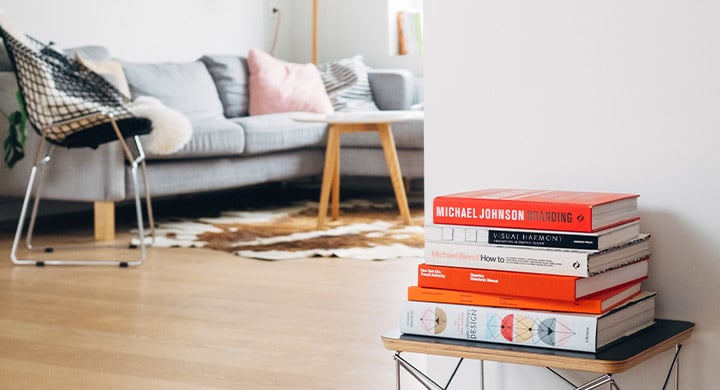 Photo by David Libeert on Unsplash
Photo by David Libeert on Unsplash
Cleaning up and cleaning out.
Living in an apartment can teach us a lot if we care to learn. Dealing diplomatically with other people living on top of one another, for example, can either cause aggravation or increase our sense of empathy and compassion. Maybe a little of all of the above.
Apartment living can also teach us lessons about what we really need in life by way of material possessions. Of course, we do need some stuff. And there’s nothing at all wrong with simply wanting stuff. But when space is limited, what’s needed and wanted are put to the test. Also, don’t forget that you’ll likely need to move all that stuff you need and want to another place one day. Suddenly, your perspective gets more discerning. This is a sign you have probably achieved the Adulting Elite.
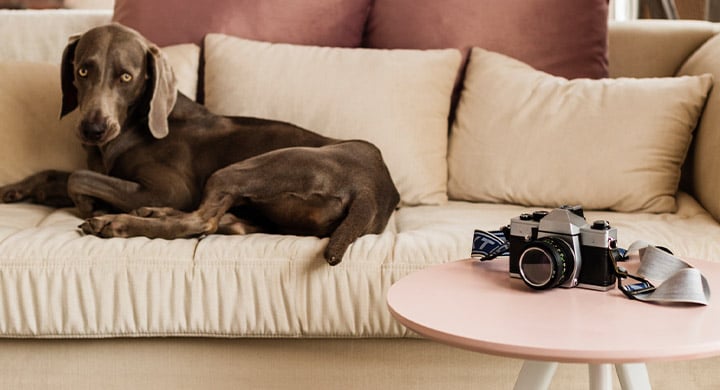
Think of things in terms of versatility. What’s the best winter jacket or coat you own? Depends on how you define “best,” right? Try defining it this way: What’s the warmest winter jacket, that’s also the most durable, that’s also got the most style, that’s also the most appropriate for work, that’s also the most appropriate for play, that’s also the easiest to pack, that’s also well, just your favorite? Don’t feel like you can’t weigh tangibles and intangibles together in the same way? Practicality is good, but just loving a thing for your own reasons is completely valid, too. Here is how to reduce it if you are looking for help.
The more boxes one item can check, the more value it gets assigned. You realize that some things you own seem redundant or superfluous. And suddenly, you get a much clearer picture of what belongs in your space and what belongs in a donation pile. Also, think about saving money for that one key item that you can keep forever.
Getting small.
Small is sexy. Okay, maybe that’s an exaggeration, but for many urban apartment dwellers, small space is a fact of life. But smart use of scant square footage can make a postage-stamp-small studio feel like a palace (also a slight exaggeration). Good news is that the internet is absolutely resplendent with tiny apartment ideas. Treat it like a game, and every small-space solution you master will feel like a “little” win.
First hint: camouflage. Best example is a hot water radiator. They’re a necessary fixture in many New York apartments, and while they have their charm, they aren’t exactly conversation pieces. Paint them to match the walls, and they’ll recede into the background where they belong. And you can do the same with anything else you don’t want squandering visual space.
White is the new black. At least where walls in small spaces are concerned. It’s the one color “rule” most people know — bright white paint reflects the widest spectrum of light, giving a space a more expansive feel. The whiter the paint, the more light it reflects. Obviously, there are ways to play with other colors for effect, but unless you’re a pro decorator (or even if you are), this is one rule that won’t steer you wrong.
Think cubic footage, not just square. That is to say, if you use your imagination in three dimensions, you’ll find your tiny space has a lot more space than you think.
Loft your bed up off the ground and open the floor space underneath for a desk or a small couch. Or maybe build a bed up off the floor with storage drawers underneath. Here are some more pro tips.
Bookcases can stack tall rather than wide, giving you shelf storage all the way to the ceiling.
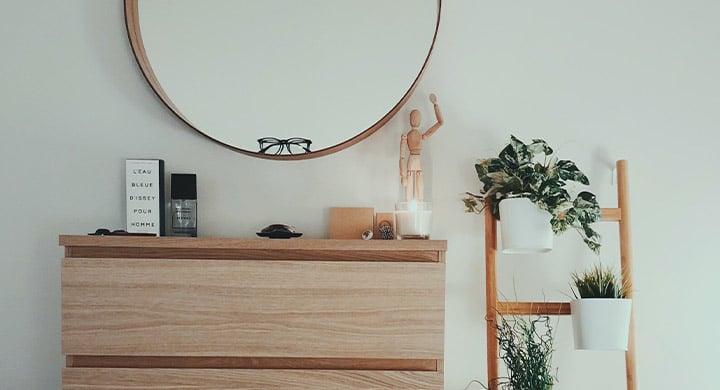 Photo by James Lindsay on Unsplash
Photo by James Lindsay on Unsplash
Engineer clutter out of your life. Any low, flat surface attracts day-to-day clutter. Of course, we all need a place to drop our keys and mail at the end of a long day, but if you’re thoughtful about your surfaces, you can trick yourself out of bad habits that can make a small space look sloppy in a hurry. Take an architect’s drafting table, for example. It’s angled, and as a result, it’s a horrible place to lay extraneous clutter because things will slide off.
No walls, no problem. Small studios and efficiencies, by definition, don’t have rooms. And with small spaces, it can be hard to define areas without things feeling crowded. That said, certain areas demand a dedicated purpose. Sleeping is the best example — you want a place to sleep that’s spatially separate from where you work, eat or play video games. Curtains work, and they’re nice because they can be pulled back to keep things more open during the day. The classic IKEA Kallax bookshelf also acts as an amazing divider. Because it’s open, it feels weightless and allows light to flow freely. And because it’s a bookcase, it creates more useful space rather than simply chopping space up.
The internet loves small-space solutions. Do a little research on Pinterest, and you’ll be amazed at how creative people can get when they’re trapped in a little box. Do you still need rental insurance on a small apartment? Yes!
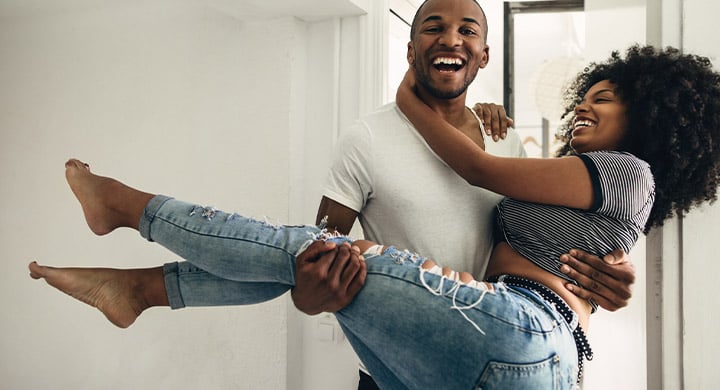 Art.
Art.
Wall art is an extremely personal choice, and the options are very literally infinite. So let’s start with this simple yet immutable truth: Walls look much better with something on them than they do without. Beyond just looking better, art can bring you real joy, both consciously and subconsciously. Art will enrich your life. In short, art is very worth it.
Try reimaging what you think of as art. Art, for example, does not need to be expensive. Not at all, actually. If it appeals to you — if it makes you smile or laugh or think or feel anything — it could cost five bucks or 5,000.
Art also doesn’t need a unifying theme or style. You probably enjoy all different kinds of music or food. Art is allowed to be the same way. Open, eclectic taste looks just as good on a wall as it does on a human. Some alternative ideas to art can help too.
Art doesn’t need to be made by a professional, either. Everybody has the potential to create art. Even you. Got some Instagram photos you like? Check online for services that will mat and frame them. Got a big wall that needs something to make it interesting? Go out and frame a big rectangle of artificial grass. Or weird wallpaper. Or get a letter stencil at the local hardware store and create a letter collage wall with spray paint. Or pass around a polaroid instant camera during your next night out with friends, then pin the photos on your wall in a grid. Any of these options will give you a story to tell, and if you decide you don’t like them, you just take it all down and start over.
Finally, do you have friends who are aspiring artists or photographers? Chances are, you do. If so, buy something from them. It not only helps them support their passions, but it also demonstrates that you support those passions, too. And if one of your houseguests ever asks about a piece, you can proudly tell them you know the artist personally.
Bathrooms.
Apartment bathrooms pose lots of challenges. They’re usually small, and where changes are concerned, there’s not a lot you can work with. But take heart. You’ve got a few options.
Showerheads. Water pressure is what it is, but a good showerhead can change your life. They’re super easy to install, and when your lease is up, just replace the old one and take yours with you.
Spend some money on a really good shower curtain. The waffle cloth or terry cloth kinds are amazing. They lighten the room and feel luxurious and spa-like to the touch. Your shower curtain will likely be the defining visual element of a tiny bathroom space, so make it count.
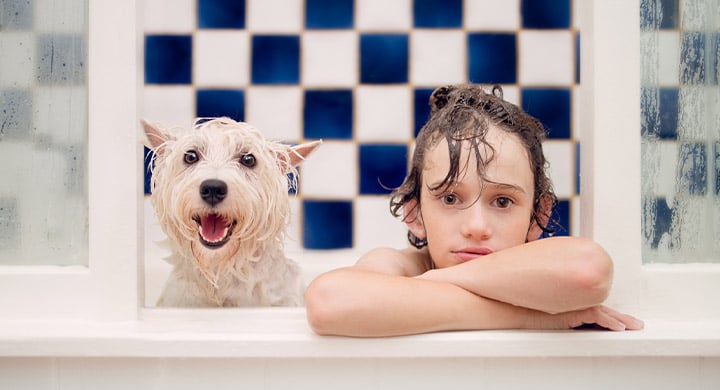 Certain kinds of plants will thrive in bathrooms and add life and freshness to a space that can feel dank and musty otherwise. Look for low-light, high-humidity species — think plants that thrive in rainforests under canopy cover. Orchids do well. Broad, hardy-leafed plants like philodendron, begonia and dieffenbachia will be happy. Mosses and bamboo are also nice choices and add a peaceful spa vibe.
Certain kinds of plants will thrive in bathrooms and add life and freshness to a space that can feel dank and musty otherwise. Look for low-light, high-humidity species — think plants that thrive in rainforests under canopy cover. Orchids do well. Broad, hardy-leafed plants like philodendron, begonia and dieffenbachia will be happy. Mosses and bamboo are also nice choices and add a peaceful spa vibe.
Grout can get gross. Give it a deep clean with baking soda and a toothbrush, or if it’s beyond all that, look into painting over it with grout paint. They even have markers designed especially for the job.
Finally, bathroom lighting can seem permanent, but it’s not. It’s easy to swap out to suit your taste. Just be sure to store the previous fixture safely so you can replace it when it’s time to say goodbye. If you are feeling like you might need a side hustle to help with all your ideas, we have some ideas.
 Photo by Isabela Kronemberger on Unsplash
Photo by Isabela Kronemberger on Unsplash
Go big with bedding and fluffy with towels.
Apartment living can be sparse in so many ways, and chances are, you’ll be watching every penny. So when you do decide to splurge, do so selfishly. After all, you will be the person spending the most time in your space. So make sure the little luxuries are yours to enjoy and enjoy fully. Specifically, things like pillows, bed linens and towels will increase the quality and coziness of your life immensely. They touch your skin, after all. Do your research. The internet is overflowing with designer tips to get the most for your moolah when it comes to creature comforts, and you don’t need to spend extravagantly to treat yourself to something extra.
Accent walls.
Paint is always subject to the terms of your lease, obviously. But an accent wall is a great way to transform an otherwise stark space with minimal effort (and minimal repainting when you leave).
First, you want to choose the right wall to accent. Most people think it should be the first wall you see when you walk through the door of a room, and while that might be true in some cases, there are other considerations.
Accent walls are best when they’re free of windows. The light from the window, depending on the time of day and the size of the window, will often either darken the color or obscure it.
In long rooms, accent one of the short walls to correct the space visually. Painting the long wall will accentuate the length of the room and make it seem even more out of whack.
If a wall already has a natural focal point — a fireplace or a headboard, for example — double down on that focus by using it as an accent wall. Ideally, you have only one visual focal point in a room.
When choosing a color, be fearless. Generally, the accent should be darker than the other walls, but experts even find ways to break that rule! Bold accents in bright, white rooms add a modern feel. Dark, neutral accents add rich, beautiful dimension, especially when the lighter walls are more muted neutrals. Black? Go for it! Contrary to popular belief, a black accent wall won’t make a room look smaller. In fact, done right, it can make it look almost infinite.
Chalkboard paint is also an interesting option with some utility as well. Use it as an accent in the kitchen or near your front door, and it’s a great place to jot reminders, phone numbers, grocery lists or calendars. Celebrating a roomie’s birthday? Wipe the wall clean and show your appreciation by decorating it with a festive chalk mural!
If you’re not allowed to paint, you’ve still got options. A wall full of framed artwork, photography or mirrors can add accent and focus. Also, check out some of the amazing choices of temporary wallpaper now available!
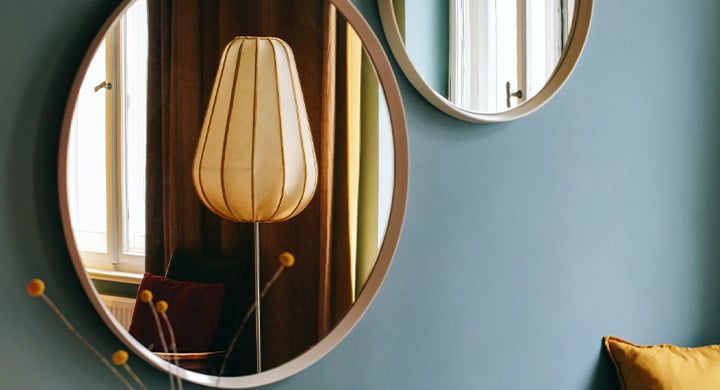 Mirrors.
Mirrors.
It’s no big secret that mirrors make small spaces look bigger. But, as with any good tip, there are ways to make it work better.
Mirrors reflect, so the first thing you’ll want to consider is what you’ll be reflecting. For example, if dinner guests are forced to look at themselves while they’re eating, they’ll find it distracting and uncomfortable. Or, if placement in a bathroom reflects the toilet into other rooms when the door is open, that’s ew.
On the other hand, natural light and views of the outdoors are wonderful to reflect. Positioning mirrors opposite windows will give the sense of doubling those windows and will bring elements of the outside inside.
It’s always nice to have a mirror by your front door. It’s welcoming, adds light and space to what’s often a small dark area; and of course, it gives you one last look at your face before you show it to the rest of the world. If you haven’t rented an apartment yet and you are just brainstorming on how to pick a great apartment with light, check this out.
When it comes to mirrors, bigger and bolder is beautiful. Large frame mirrors can be pricey, but if you use your imagination and keep your eyes open, you can find interesting options at off-price retailers, garage sales and even big-box hardware stores. The nice thing about mirrors is that people tend to focus on the reflection, so even if you’re not in love with the frame, you might be surprised how well it works in your space.
Keep in mind that mirrors don’t always reflect accurately. If you’re using a mirror to check your own appearance, try this: Find a perfectly circular object, then hold it up to the mirror you’re considering. If it’s warped into an oval in any way, you’ll get a good read on the distortion. Become more knowledgeable on mirrors by reading this.
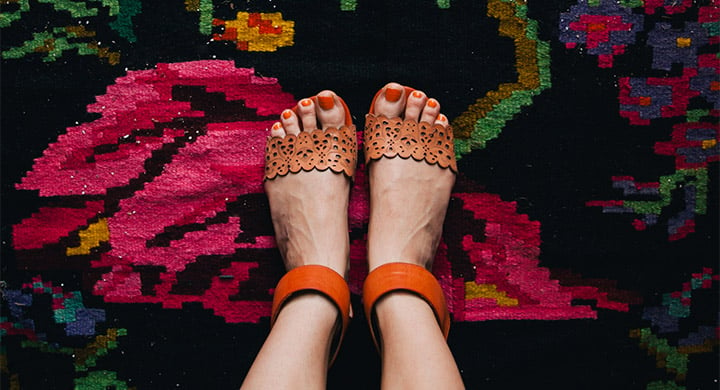 Rugs.
Rugs.
Rugs certainly aren’t necessary, but they have a lot to add to a space by way of personality. If you need more of an excuse to indulge in some floor covering for your apartment, they also dampen sound — both generally, and of course from your footfalls. So your downstairs neighbor won’t end up your enemy.
When it comes to rug options, there are too many to list, so we’ll just break it down to some general tips.
First of all, rugs are expensive. They will probably be expensive regardless of your definition of expensive, and they don’t technically qualify among any list of apartment living room ideas on a budget. So just be prepared for that. Then do your research. You can find some interesting, less expensive options online, and some of them will offer discount codes periodically. If you’re buying from a brick-and-mortar store, don’t be afraid to bargain — if you’re buying more than one, definitely ask for a deal. But most of all, keep in mind that a good rug is a long-term investment in decor. With proper care, a good rug can last a whole lot longer than all your apartment leases put together.
Next, consider the pile and care in regard to the area. High-traffic hallways and kitchens, for example, wear heavily and are subject to a lot more spillage and debris, so you’ll want something that can stand up. Bedrooms, on the other hand, are great places for soft, cushiony weaves that welcome bare or stockinged feet.
Finally, consider size. In general, go as big as the space allows. Small rugs in large spaces, like living rooms, tend to accentuate both the smallness of the room and the smallness of the rug. On the other hand, if you can fill a living area with a rug, enough to get all the furniture at least partially on the rug, it ties it all together as a welcoming social space and makes the room feel just the size it’s supposed to.
We could go on and on, but the rest of the internet awaits. Remember, nothing you’re facing as a renter hasn’t been faced by countless renters before you, and their tips, tricks, hacks and hints are all out there for you to find.
Enjoy life as a renter. Heck, enjoy life, generally speaking! Because if there’s one thing we can all learn from our grandmothers’ needlepoints, it’s that home really is where the heart is. Oh, and if you want to know more about how much renters insurance costs or how to get a quote with Toggle® or how much renters insurance do you really need, or renting like a pro we have a blog for that.

Related Articles
Pet-Proofing Tips for Your Apartment: Toggle Insurance
Smart home essentials for smart apartments
The perfect apartment has a high IQ. Here’s a guide to fostering your apartment’s intelligence with renter friendly smart devices.
Everything you need to find a dream apartment
Here's the ultimate checklist to help find, secure and move into your favorite pad. Follow this, and you will be on your landlord's good side.

